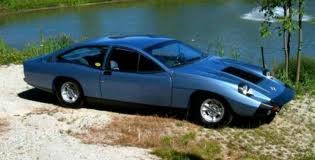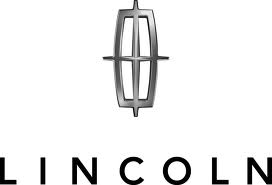A brief history of
Lincoln
Introduction
The car manufacturer Lincoln has made an important impact on the automotive world. In this article we will give a brief but detailed history of the Lincoln marque.
We will look at the origins of Lincoln looking at who, why, where and when Lincoln was founded. We'll look at the design of the iconic Lincoln logo and what are some the more significant Lincoln models.
We'll take a glance at what racing history the Lincoln has and who some of the most important people have been in the history of Lincoln over the years.
Who, where, when and why was
Lincoln founded?
Lincoln Motor Company, commonly known as Lincoln, was founded in 1917 by Henry M. Leland and his son Wilfred Leland. The company was established in Detroit, Michigan, United States, which was a hub for the growing automobile industry. Henry Leland, a prominent figure in the automotive industry, had previously founded Cadillac and had a wealth of experience and expertise in luxury car manufacturing. Lincoln was created with the vision of producing premium automobiles that would rival the leading luxury car brands of the time.
The decision to establish Lincoln came at a time when the demand for luxury vehicles was increasing, and Henry Leland saw an opportunity to cater to the discerning tastes of affluent customers. The company was named after Abraham Lincoln, the 16th President of the United States, who was known for his leadership, integrity, and commitment to progress. The name "Lincoln" was chosen to evoke a sense of prestige, elegance, and American heritage.
Initially, Lincoln focused on producing aircraft engines for the United States military during World War I. However, after the war, the company shifted its focus to luxury automobiles. Lincoln's first car, the Lincoln Model L, was introduced in 1920 and quickly gained a reputation for its craftsmanship, performance, and attention to detail. The company's commitment to quality and innovation helped it establish a strong foothold in the luxury car market.
Over the years, Lincoln continued to evolve and introduce new models that embodied luxury, style, and advanced features. The brand became known for its iconic designs, comfortable interiors, and cutting-edge technology. Lincoln cars were often favored by presidents, celebrities, and business leaders, further enhancing the brand's prestige and status.
Today, Lincoln remains a prominent luxury car manufacturer and continues to produce a range of vehicles that blend modern technology, refined craftsmanship, and a rich heritage. The company's commitment to providing a luxurious and comfortable driving experience has made it a popular choice among those seeking a premium automotive brand.
How did the
Lincoln logo originate?

How did the Lincoln logo originate?
The history of the Lincoln logo is an integral part of the brand's identity and evolution over the years. The logo has undergone several changes, reflecting the brand's commitment to innovation, luxury, and American heritage.
In its early years, the Lincoln logo featured the word "Lincoln" written in a stylish script font. This logo conveyed a sense of elegance and sophistication, emphasizing the brand's focus on crafting luxurious automobiles. The script font was often accompanied by a stylized emblem, which included a star and a wreath, symbolizing excellence and success.
As the brand evolved and embraced modern design trends, the logo underwent a transformation in the mid-20th century. The script font was replaced with a block lettering style, giving the logo a more bold and contemporary look. The emblem also saw changes, with a simplified star design enclosed in an oval shape. This new logo aimed to convey a sense of prestige and modernity, appealing to a new generation of luxury car buyers.
In recent years, Lincoln introduced a refreshed logo that reflects its commitment to a modern and progressive brand image. The new logo features the name "Lincoln" in capital letters, with a sleek and simplified font. The emblem has been replaced with a distinctive Lincoln star emblem, which is an interpretation of the original star design but with a more refined and contemporary appearance.
The evolution of the Lincoln logo reflects the brand's desire to stay relevant and resonate with its target audience. The changes in typography and design elements represent Lincoln's ability to adapt to changing market trends while maintaining its core values of luxury, quality, and American heritage.
What are some of the significant
Lincoln models?
Lincoln has a rich history of producing luxurious and high-performance models that have left a lasting impact on the automotive industry. From the early years to the present, the brand has introduced notable vehicles that combine style, comfort, and impressive performance.
In the early years, Lincoln introduced the Continental, a flagship model that quickly became synonymous with luxury and elegance. The Continental featured a sleek design, spacious interiors, and powerful engines, making it a popular choice among affluent buyers. It became an icon of American automotive luxury.
As the years progressed, Lincoln continued to release models that showcased its commitment to performance and innovation. In the 1960s, the Lincoln Continental Mark III made its debut, offering a unique combination of luxury and power. It featured a powerful V8 engine, advanced suspension, and cutting-edge technology for its time.
Another significant model from the brand's history is the Lincoln LS, which was introduced in the early 2000s. The LS was a midsize luxury sedan that emphasized sporty performance and driving dynamics. It offered a range of engine options, including a potent V8, and featured advanced technologies like adaptive suspension and traction control.
One of the most notable models in recent years is the Lincoln Continental, which made a comeback in 2017. The new Continental brought back the essence of its predecessor with a modern twist. It featured a refined exterior design, luxurious interior, and an array of advanced safety and convenience features.
Lincoln also entered the SUV market with high-performance models like the Lincoln Aviator and Lincoln Navigator. These full-size SUVs offer powerful engines, spacious interiors, and advanced technologies, making them popular choices for those seeking both luxury and performance.
Throughout its history, Lincoln has remained committed to delivering exceptional performance without compromising on comfort and refinement. The brand's lineup of higher-performance models has consistently impressed buyers with their powerful engines, precise handling, and advanced technologies.
As Lincoln looks to the future, it continues to develop innovative models that push the boundaries of performance and luxury. With a focus on electrification and advanced driver-assistance systems, Lincoln aims to redefine what it means to drive a high-performance luxury vehicle.

One of Lincoln's Most Iconic Models
Who are some of the most important people in
Lincoln's History
Behind the success of Lincoln, there are several key individuals who have played significant roles in shaping the brand's history and direction. These individuals, through their leadership, innovation, and passion for automobiles, have left a lasting impact on Lincoln's legacy.
One notable figure in Lincoln's history is Henry M. Leland, who co-founded the Lincoln Motor Company in 1917. Leland brought his expertise in precision manufacturing to the company, having previously established Cadillac. His commitment to excellence and attention to detail set the foundation for Lincoln's reputation for quality and luxury.
Another influential person in Lincoln's history is Edsel Ford, the son of Henry Ford and the president of Ford Motor Company at the time of Lincoln's acquisition. Edsel Ford recognized the potential of Lincoln as a luxury brand and championed its development, overseeing the expansion of the Lincoln lineup and ensuring that it offered vehicles that appealed to discerning customers.
In more recent years, various designers and engineers have left their mark on Lincoln's lineup. One notable individual is J Mays, the former Vice President of Design at Ford Motor Company. Mays played a crucial role in shaping Lincoln's design language, infusing the brand's vehicles with a distinct sense of elegance and sophistication.
Additionally, a number of influential leaders have guided Lincoln through its modern era. One such individual is Kumar Galhotra, who served as the President of Lincoln from 2014 to 2020. Galhotra focused on revitalizing the brand and repositioning it as a leading luxury automaker. Under his leadership, Lincoln experienced a resurgence with the introduction of new models and a commitment to exceptional customer experiences.
Furthermore, the talented individuals working in Lincoln's design and engineering teams have played vital roles in the development of the brand's most significant models. These designers and engineers have brought innovation, creativity, and technical expertise to the table, ensuring that Lincoln vehicles deliver on both performance and luxury.
From the founders and early leaders to the designers and engineers of today, the people behind Lincoln have been instrumental in creating a legacy of automotive excellence. Their collective vision, dedication, and talent have shaped the brand and allowed it to thrive in the competitive luxury automobile market.

One of the most influential people in the history of Lincoln
Lincoln's Racing History
While Lincoln is primarily known for its luxury vehicles, the brand has also made notable contributions to the world of racing throughout its history. Although not as prominent as some other manufacturers in motorsports, Lincoln has participated in various racing events, showcasing its performance capabilities and pushing the boundaries of what its vehicles can achieve.
One significant racing endeavor in Lincoln's history was its participation in the early days of NASCAR (National Association for Stock Car Auto Racing). In the 1950s and 1960s, Lincoln entered NASCAR races with its iconic Continental model. These races featured modified stock cars, and Lincoln's participation allowed the brand to demonstrate the power and performance of its vehicles on the track.
In addition to NASCAR, Lincoln has also ventured into other racing disciplines. The brand has participated in endurance races, such as the 24 Hours of Le Mans, which is one of the most prestigious and challenging races in the world. Lincoln competed in the early years of the race, showcasing its endurance and reliability in the grueling 24-hour competition.
Moreover, Lincoln has embraced the world of luxury car racing. In the 1950s, the brand sponsored the Carrera Panamericana, a legendary road race held in Mexico. Lincoln's participation in this event allowed it to demonstrate the performance and durability of its vehicles in a demanding racing environment.
Over the years, Lincoln has also collaborated with racing teams and drivers to further showcase its performance capabilities. One notable partnership was with Jackie Stewart, a renowned Formula One driver. Lincoln provided Stewart with a customized Lincoln Continental, which he used as a safety car during Formula One races. This collaboration helped highlight Lincoln's commitment to performance and safety.
While Lincoln's racing history may not be as extensive or well-known as some other manufacturers, its participation in various racing events underscores the brand's dedication to performance and the pursuit of excellence. These racing endeavors have allowed Lincoln to test and refine its vehicles in demanding environments, pushing the boundaries of what is possible and inspiring advancements in both luxury and performance.
Summary
Lincoln is a well-established car manufacturer known for its luxurious vehicles and long-standing reputation in the automotive industry. With a focus on elegance, comfort, and advanced technology, Lincoln has become synonymous with refined luxury and exceptional craftsmanship.
Throughout its history, Lincoln has produced iconic models that have captured the imagination of car enthusiasts and set new standards for luxury and performance. The brand's commitment to quality and innovation is evident in its range of vehicles, which showcase exquisite design, advanced safety features, and powerful performance.
View Lincoln Car Specifications
More Manufacturer Histories.

























